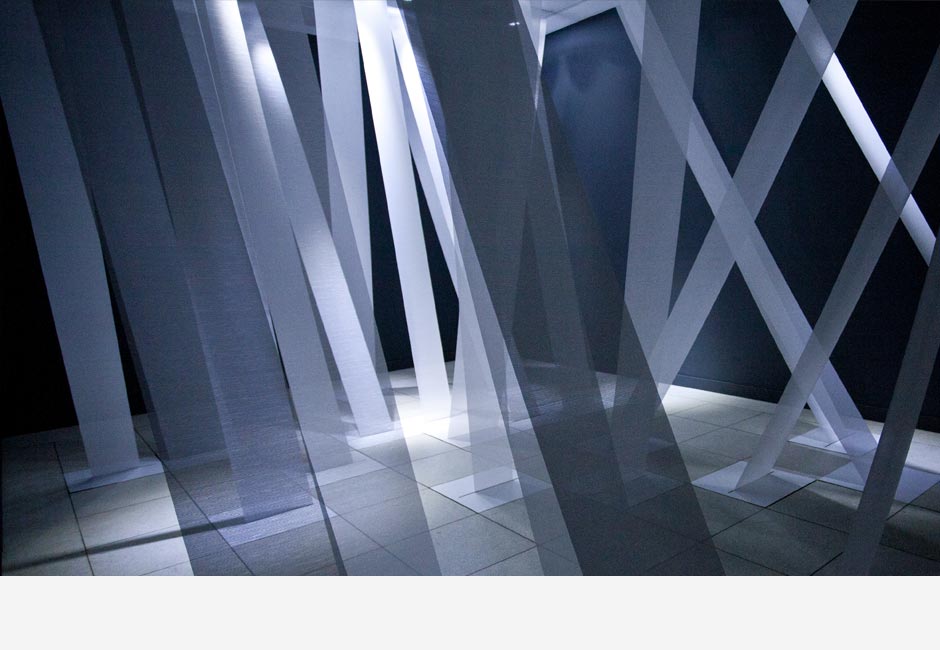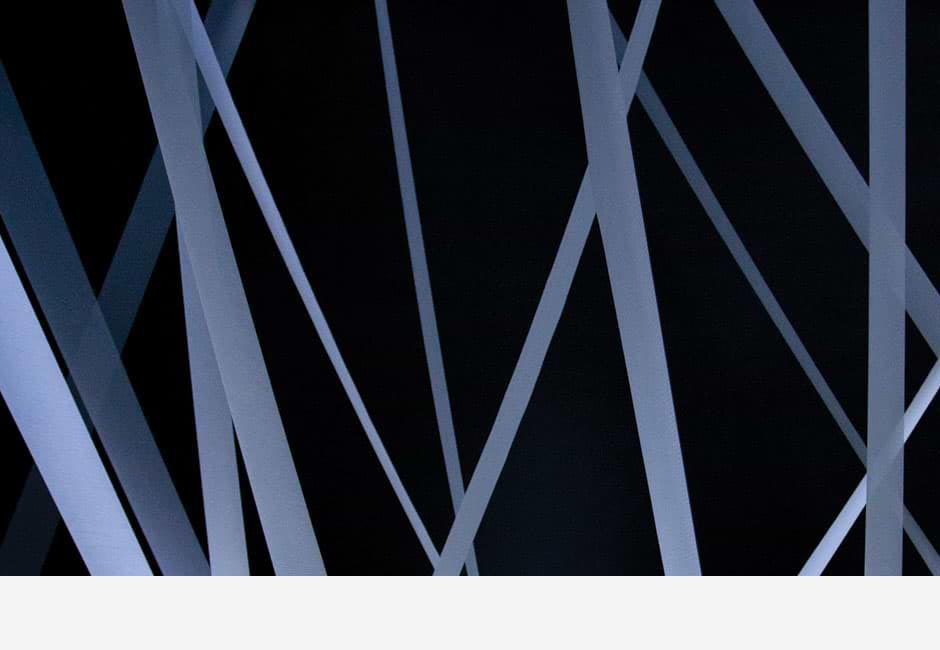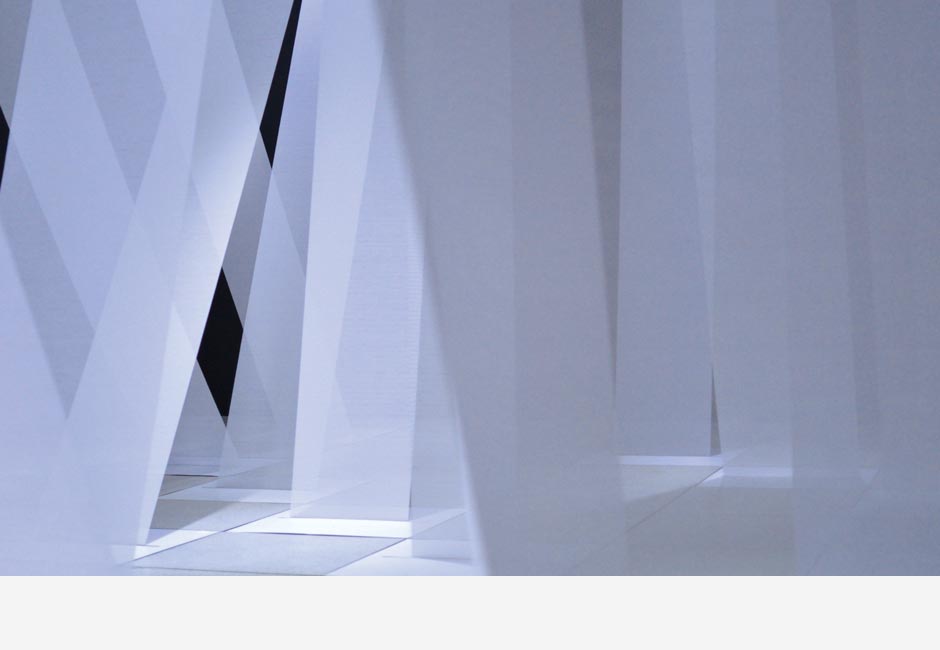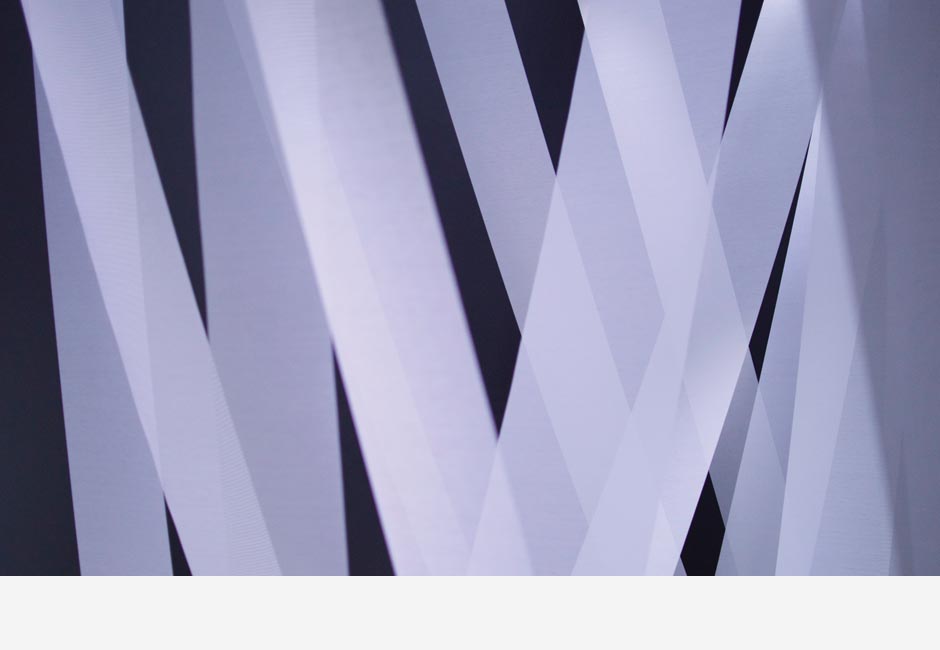Installations / Melt2
'Melt2' Installation Art: Making Light Artwork in a suspended space
| Title: | Melt2 |
| Date: | 2014 |
| Dimensions: | Variable |
| Material: | Fabric screens and programmed light |
| First exhibited: | 'Melt, Splinter and Thread' exhibition, Cube Gallery, Phoenix, Leicester. 2014 |
| Funding: | Arts Council England, supported by the IOCT at De Montfort University |
'Melt2' is constructed from white, semi-translucent, architectural mesh: its long thin strips are tensioned between the ceiling and floor. Here the viewer walks into a softly lit maze of clean linear planes. The stark forms are animated as light ‘blows’ through them, reminiscent of shards of light shining down through the cloud.
The assembled forms create overlapping geometries that build and dissipate as the lights fade up and down, altering their surface opacity. The light moves in rhythms from slow sweeps across space to roaming illuminated trails passing from one cluster of forms to another. Numerous possible routes around the structures offer the eye continuously varying scenes from dense shadowed forest to open graphic drawing. The other viewers in the space become the inhabitants of the landscape.
An installation art derived from a mixed-media sculpture
'Melt2' is an Installation Art version of the sculptural work Melt created in liquid crystal glass.
In 'Melt2' it is as if you are standing inside Melt or one of Esther Rolinson’s drawings while it composes around you. Complex vistas through the tensioned translucent structures illuminate then disappear silently creating a momentary architecture around you. Walls and pathways build and dissolve as you walk through a maze of diagonal planes.
'Melt2' installation was developed as part of the series 'Melt, Splinter and Thread' over a two-year studio practice and research period with the assistance of Dave Everitt, Artist Programmer Sean Clark and Dr Graeme Stuart.
'Melt2' is constructed from white, semi-translucent, architectural mesh: its long thin strips are tensioned between the ceiling and floor. Here the viewer walks into a softly lit maze of clean linear planes. The stark forms are animated as light ‘blows’ through them, reminiscent of shards of light shining down through the cloud.
The assembled forms create overlapping geometries that build and dissipate as the lights fade up and down, altering their surface opacity. The light moves in rhythms from slow sweeps across space to roaming illuminated trails passing from one cluster of forms to another.
Numerous possible routes around the structures offer the eye continuously varying scenes from dense shadowed forest to open graphic drawing. The other viewers in the space become the inhabitants of the landscape.
Linda Candy, Explorations in Art and Technology, published by Springer 2018.
'Melt2' has subtle programming. Its changes were as waves of white and pale colours of light flow through the structure. It modifies every few seconds, or so small bursts of intense colour chase through.
The artwork can stand alone as a programmed structure with its own independent behaviours. It can also be connected to its environment by photon sensors that measure humidity, light and temperature. This information is then used to influence the changes of colour. The programming and interactive aspects of 'Melt2' have been developed with Dr Sean Clark.






